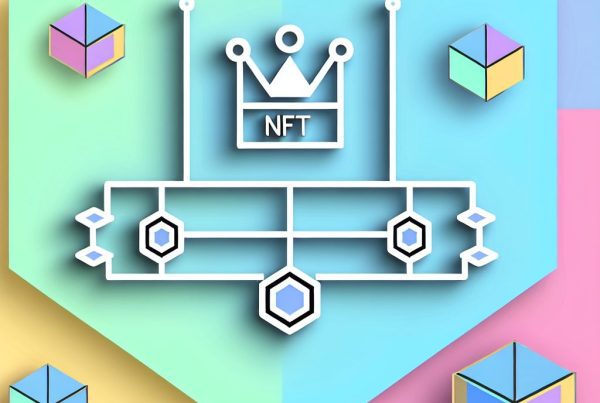What Are Crypto Layer 0 Networks?
The cryptocurrency landscape is evolving rapidly, with new technologies and frameworks emerging to enhance scalability, interoperability, and efficiency. Among these innovations, Layer 0 networks have gained significant attention. But what exactly are they, and how do they differ from traditional blockchain architectures? This article delves into the intricacies of Layer 0 networks, their functionalities, and their implications for the future of the cryptocurrency industry.
Understanding Layer 0 Networks
Layer 0 networks serve as the foundational layer for blockchain ecosystems, enabling multiple Layer 1 blockchains to operate seamlessly. Unlike Layer 1 solutions, which focus on enhancing the capabilities of individual blockchains, Layer 0 networks provide the underlying infrastructure that connects various blockchains, facilitating communication and interoperability.
In essence, Layer 0 acts as a protocol layer that allows different blockchains to share information and resources. This architecture is crucial for addressing some of the most pressing challenges in the crypto space, such as scalability, speed, and cross-chain compatibility.
The Architecture of Layer 0 Networks
Layer 0 networks typically consist of several key components:
- Relay Chains: These are the main chains that connect various Layer 1 blockchains. They facilitate communication and data transfer between different networks.
- Parachains: These are independent blockchains that run parallel to the relay chain. They can have their own unique features and functionalities while benefiting from the security and interoperability provided by the Layer 0 network.
- Bridges: These are mechanisms that allow for the transfer of assets and data between different blockchains, enhancing interoperability.
This architecture allows Layer 0 networks to support a diverse range of applications and use cases, making them a versatile solution in the crypto ecosystem.
Key Features of Layer 0 Networks
Layer 0 networks come with several distinctive features that set them apart from traditional blockchain models:

- Interoperability: Layer 0 networks enable different blockchains to communicate and share data, fostering a more interconnected ecosystem.
- Scalability: By allowing multiple blockchains to operate simultaneously, Layer 0 networks can significantly enhance transaction throughput and reduce congestion.
- Security: Layer 0 networks often provide a unified security model, allowing all connected blockchains to benefit from shared security protocols.
- Flexibility: Developers can create custom parachains tailored to specific use cases, enhancing innovation and adaptability.
Real-World Applications of Layer 0 Networks
Layer 0 networks have already begun to make a significant impact in various sectors of the cryptocurrency industry. Here are some notable examples:
Polkadot
Polkadot is one of the most prominent Layer 0 networks, designed to enable different blockchains to interoperate. Its architecture consists of a central relay chain and multiple parachains, allowing developers to create specialized blockchains that can communicate with one another. This flexibility has led to a diverse ecosystem of projects, from decentralized finance (DeFi) applications to non-fungible tokens (NFTs).
Cosmos
Cosmos is another leading Layer 0 network that focuses on interoperability. It utilizes the Inter-Blockchain Communication (IBC) protocol, allowing different blockchains to exchange data and assets seamlessly. Cosmos aims to create an “Internet of Blockchains,” where various networks can collaborate and share resources, enhancing the overall functionality of the crypto ecosystem.
Avalanche
Avalanche is a Layer 0 network that emphasizes speed and scalability. It allows developers to create custom blockchains (subnets) that can operate independently while benefiting from the security and interoperability of the Avalanche platform. This flexibility has made Avalanche a popular choice for DeFi projects and enterprise solutions.
Benefits of Layer 0 Networks
The adoption of Layer 0 networks offers several advantages for developers, users, and the broader cryptocurrency ecosystem:
- Enhanced Scalability: By enabling multiple blockchains to operate concurrently, Layer 0 networks can significantly increase transaction throughput.
- Improved User Experience: Users can interact with various applications across different blockchains without needing to switch networks or wallets.
- Cost Efficiency: Layer 0 networks can reduce transaction fees by optimizing resource allocation and minimizing congestion.
- Innovation Opportunities: Developers can create specialized parachains tailored to specific use cases, fostering innovation and creativity.
Challenges Facing Layer 0 Networks
Despite their numerous benefits, Layer 0 networks also face several challenges:
- Complexity: The architecture of Layer 0 networks can be complex, making it challenging for developers to navigate and build applications.
- Security Risks: While Layer 0 networks provide a unified security model, vulnerabilities in the relay chain could potentially compromise all connected parachains.
- Adoption Barriers: The success of Layer 0 networks relies on widespread adoption by developers and users, which may take time to achieve.
The Future of Layer 0 Networks
The future of Layer 0 networks looks promising as the demand for interoperability and scalability continues to grow. As more projects adopt this architecture, we can expect to see:
- Increased Collaboration: Layer 0 networks will foster collaboration between different blockchain projects, leading to innovative solutions and applications.
- Enhanced User Experiences: Users will benefit from seamless interactions across multiple blockchains, simplifying their experience in the crypto space.
- Broader Adoption: As developers become more familiar with Layer 0 technologies, we can expect a surge in the creation of new applications and services.
FAQs About Layer 0 Networks
What is the primary purpose of Layer 0 networks?
The primary purpose of Layer 0 networks is to provide a foundational infrastructure that enables multiple Layer 1 blockchains to communicate and operate together, enhancing interoperability and scalability.
How do Layer 0 networks differ from Layer 1 networks?
Layer 1 networks are individual blockchains that focus on their own functionalities, while Layer 0 networks serve as a protocol layer that connects and facilitates communication between multiple Layer 1 blockchains.
Can Layer 0 networks improve transaction speeds?
Yes, Layer 0 networks can improve transaction speeds by allowing multiple blockchains to operate concurrently, reducing congestion and optimizing resource allocation.
What are some examples of Layer 0 networks?
Notable examples of Layer 0 networks include Polkadot, Cosmos, and Avalanche, each offering unique features and functionalities to enhance interoperability and scalability.
Conclusion
Layer 0 networks represent a significant advancement in the cryptocurrency industry, addressing critical challenges related to scalability and interoperability. By providing a foundational infrastructure that connects various blockchains, these networks enable a more interconnected and efficient ecosystem. As the demand for seamless interactions between different blockchain projects continues to grow, Layer 0 networks are poised to play a pivotal role in shaping the future of the crypto landscape.
For the latest updates on cryptocurrency news and price tracking, consider visiting Bitrabo. Stay connected with me on social media: follow me on X, Instagram, and Threads.
Disclaimer: The information provided in this article is for informational purposes only and should not be considered financial advice. Always conduct your own research before making investment decisions.
The Crypto Watchlist of the Week 🔎
Subscribe to receive expert-curated projects with real potential—plus trends, risks, and insights that matter. Get handpicked crypto projects, deep analysis & market updates delivered to you.


